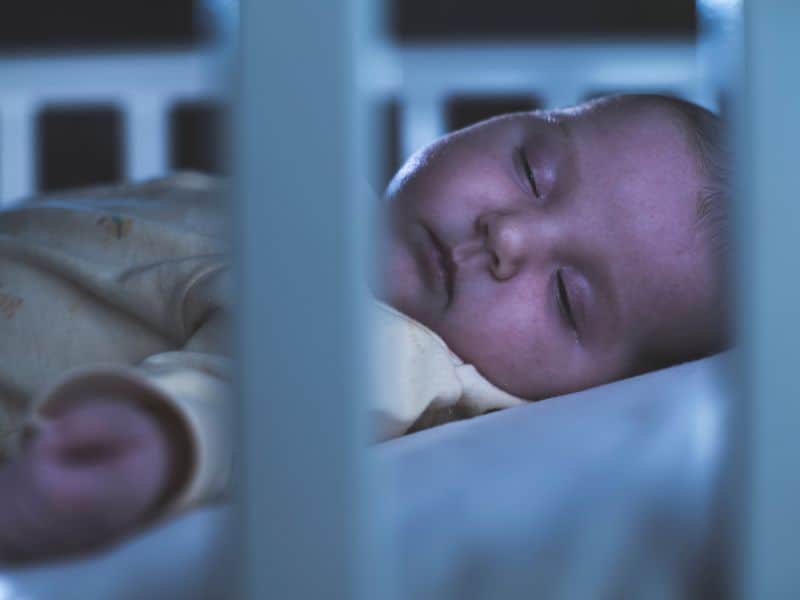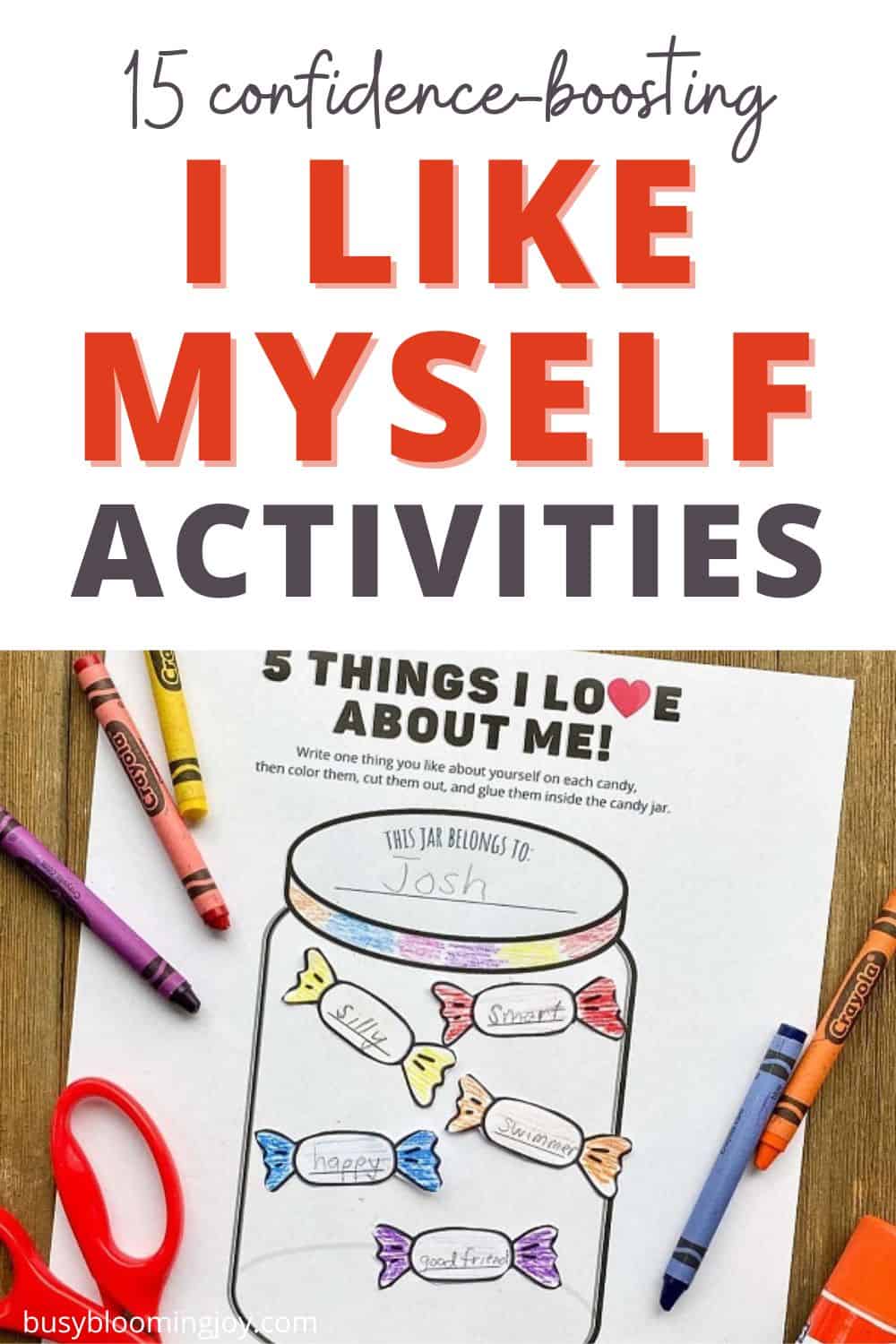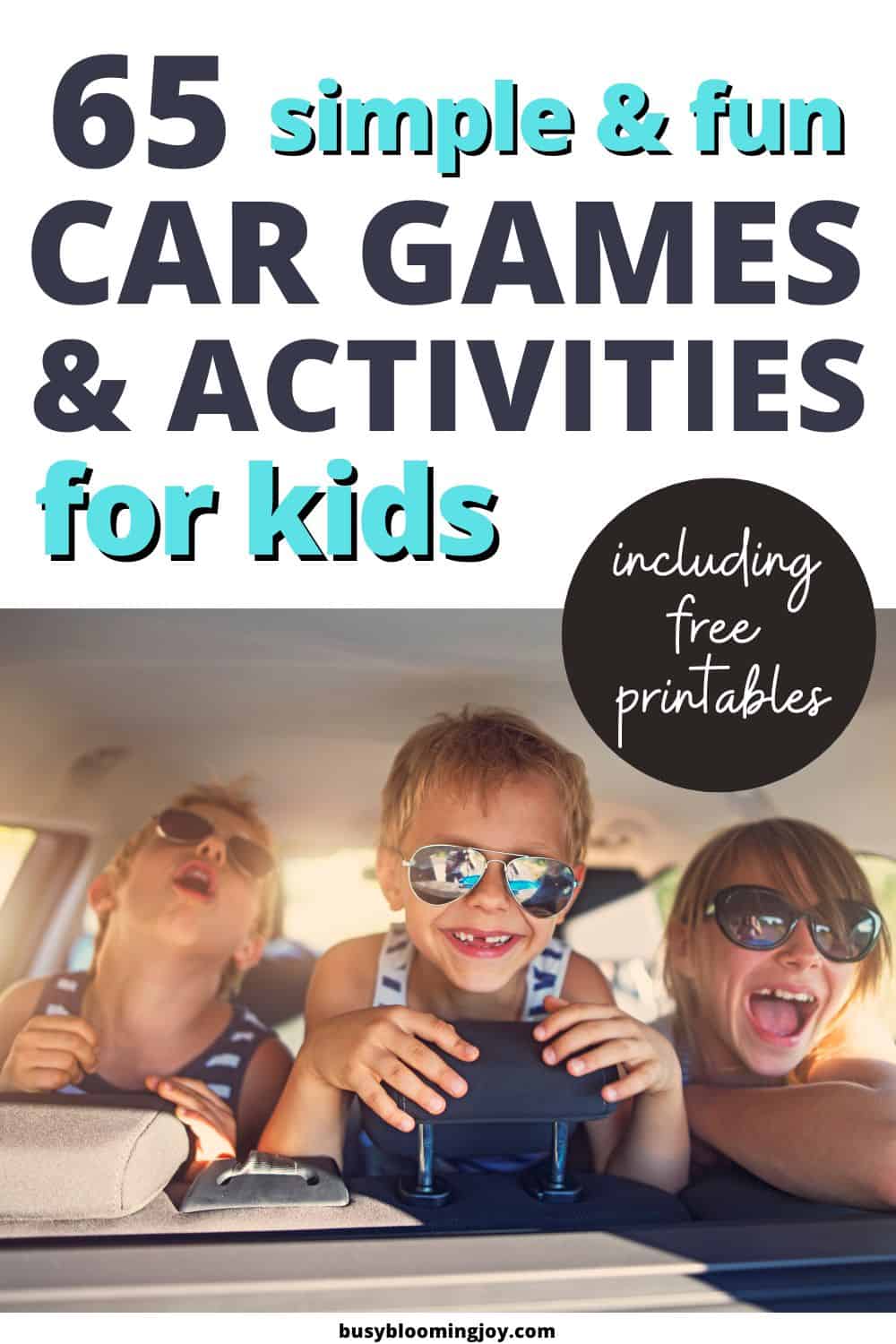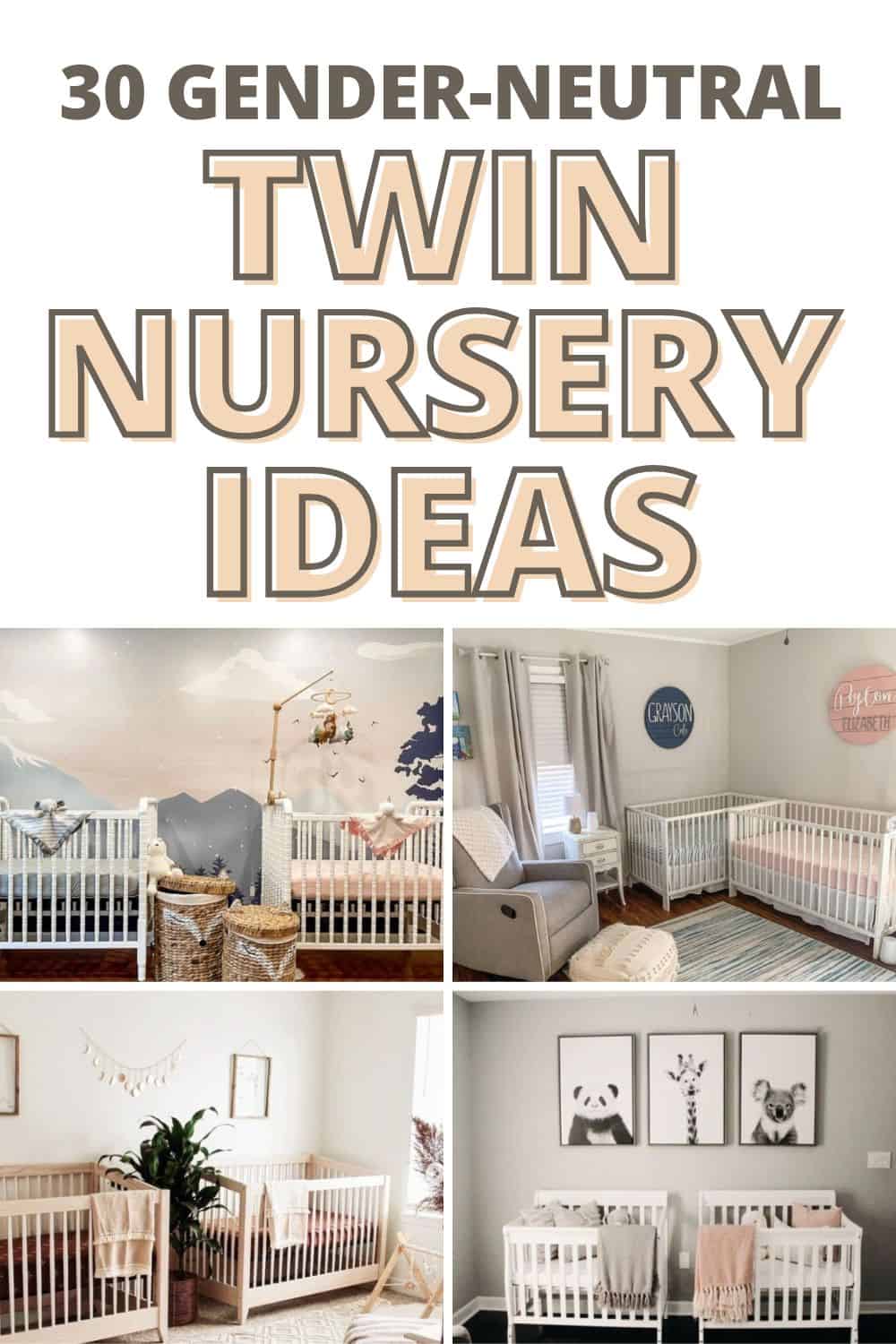Inside: 4 sample 4 month old sleep schedules available to download instantly + all the tips for a happy well rested baby
As an experienced mom of four wonderful kiddos, I know just how crucial it is to establish a solid sleep schedule for our little ones. Sleep schedules can be a game-changer, helping us ensure our baby’s get adequate sleep in the day and avoid settling issues due to overtiredness.
Combined with some crucial baby sleep strategies, a solid routine and schedule can put your 4 month old on the path to sleep success, helping them to sleep through the night when capable.
A sleep schedule is great for our sanity too, allowing just a little bit of predictability in the hecticness of mom life.
Here I’m excited to share some valuable insights and sample sleep schedules for your 4-month-old bundle of joy. Whether you’re a first-time parent or a seasoned pro, I hope these free downloadable schedules will help guide you through this stage of your baby’s development.
Let’s embrace the world of peaceful nights and well-rested days together!
Table of Contents
ToggleWhat is the best sleep schedule for a 4 month old?
The best sleep schedule for a 4 month old baby will include 2 to 3 naps in the day. Ideally, one of which will be a longer ‘restorative’ nap of 1.5-2.5 hours.
These naps should be interspersed by age appropriate wake windows, which are also a little dependent on the length of the previous nap as well as the time of day. More on this below.
The best sleep schedule should also have a “wake-up” time in cync with our natural circadian rhythm. This means starting the day between 6.30 am and 8 am.
How much should a 4 month old sleep?
A 4 month old baby should sleep 14 to 15 hours a day on average, i.e. in a typical 24 hour period. This sleep is distributed between nighttime sleep and daytime naps.
However, it’s important to remember that every baby is different, and individual sleep needs can vary. It’s possible that your 4 month old sleeps more or less than this.
12-16 hours of sleep per day would still fit within the guidelines from The American Academy of Sleep Medicine for a 4 month old baby.
However, all 4 of my children have had around 14 to 15 hours of sleep a day at the age of 4 months old. This is the recommendation from most in the know when it comes to baby sleep.
Check out these baby sleep charts for a guide on sleep needs by age.
Is your 4 month old baby getting enough sleep?
Rather than simply counting the hours, look to your baby for signs of tiredness and irratability, which would indicate your baby is not getting enough sleep in a 24 hour period.
Sleep cues for a 4 month old include:
- Yawning
- Staring vacantly
- Avoiding eye contact, turning away
- Frowning & clenching fists
- Fussing and crying
- Rubbing eyes and ears
- Becoming clingy
- Losing interest in toys
- Sucking fingers/paci
- Wanting to nurse
An overtired baby can be:
- inability to settle to sleep
- inability to be put down at all
- inconsolable crying
- inability to stay asleep for long periods
If your 4 month old appears colicky or struggles at ‘The Witching Hour’, this could be overtiredness. Overtiredness is normally a factor in both.
Can a 4 month old baby sleep too much?
If your 4 month old consistently sleeps more than the guidelines your obviously have a baby with higher sleep needs. Enjoy!
But, if your baby suddenly appears to need significantly more sleep from one day to the next, this may indicate illness. Look out for other unusual signs, such as a rash, change in number of wet/dirty diapers and change in feeding pattern/appetite.
Seek professional medical advice as necessary.
How much nap time should a 4 month old have?
A 4 month old should have around 3 hours of nap time across the daytime hours of, say, 7 am to 7 pm. Combined with 12 hours at night this will support a 4 month olds growth and development.
The 3 hours of total daytime sleep assumes baby didn’t have any long periods of awake time at night, but was only awake to eat.
If your 4 month old slept later in the day or went to bed earlier, they may need less nap time. Likewise, if they went to bed later, woke earlier, or were awake for long periods during the night, they will need more sleep in the day.
How many naps should a 4 month old take each day?
A 4 month old should take between 2 and 4 naps each day, to total the 3 hours day time sleep necessary.
Is a 40 minute nap long enough for a 4 month old?
A 40 minute nap can be long enough for a 4 month old, but longer naps are more restorative.
Each sleep cycle is 40-45 minutes long, so a 40 minute nap means that your baby has completed a single sleep cycle. This means that they reached the important regnerative deep sleep phase or stage of “quiet sleep” (the equivalent of adult deep sleep).
However, at least one longer nap every day, ideally in the middle of the day, will be highly beneficial to a 4 month old baby. Naps 1.5 to 2 hours in length will mean that baby has completed 2-3 sleep cycles.
These naps are highly restorative and often mean baby can stay awake longer before needing to sleep again.
Are short naps normal for a 4 month old?
Unfortunately short naps are normal for a 4 month old baby. This is because they can have difficulty linking 1 sleep cycle to the next and often wake after a single sleep cycle, at around 45 minutes.
Young babies can also find it hard to transition through from one sleep stage to the next. This is particularly true at the 4 month mark when your baby’s sleep starts to mature, a major transition which often disrupts sleep (the 4 month sleep regression).
This means that your baby may wake after 25 minutes or even less. This means your baby will only have completed the earlier light sleep stages. At this point, they won’t have reached the regenerative quiet sleep stage.
These very short naps, or “cat naps” are therefore significantly less restorative.
How many naps is best for a 4 month old?
2 naps per day would be best for a 4 month old, made up of one shorter nap early on of around 45 minutes, followed by a longer nap of 2+ hours in the middle of the day. A short cat nap of around 20 minutes may also be necessary in the afternoon.
However, short naps are common at this age due to the maturation of sleep. So a nap schedule that includes 3 or 4 shorter naps per day of 30-45 minutes plus a cat nap or two is also an option.
But these shorter naps won’t be as restorative, especially those less than 30 minutes when the deepest sleep stage is not reached.
On the other hand, longer naps of 2+ hours spanning 2 to 3 sleep cycles have huge restorative power. This is why the ideal 4 month old sleep schedule includes one longer nap.
Should you wake a 4 month old from a nap?
You should wake your 4 month old from a nap if they’ve been asleep for over 2 hours, to avoid impacting overnight sleep. You don’t want your baby to miss out or delay the next feed – they may need to eat more at night to catch up.
Too much sleep in the day could also mean that your baby needs less sleep at night. Your 4 month old may not want to go to sleep at night or may wake more frequently or earlier the next morning if they’ve slept too long in the day.
So keep an eye on total day sleep, rather than just the length of one nap.
4 month old ‘wake windows’
A ‘wake window’ or ‘awake time‘ is the length of time a baby can stay awake before needing to sleep. Ideally, you want to settle baby to sleep when they start to become tired and before they become overtired. You need to find the sweet spot.
Easier said than done!
Figuring out your 4 month olds wake windows can take a bit of trial and error.
They generally lengthen throughout the day, so that the first wake windows of the day will be shorter than later ones.
Ideally you want the last wake window of the day, i.e. the window before bedtime, to be the longest. This will help aid a deeper sleep at night.
Wake windows are also dependent on the length of the previous nap:
If the last nap was short i.e. 45 minutes or less
Then your 4 month old’s wake window will be 1.5 to 2 hours.
If the last nap was long, 2-2.5 hours
A long restorative nap can mean a much longer wake window for your 4 month old. They may be able to stay awake 4-4.5 hours. This means that, having woken between 2 and 3 pm, they’d manage the afternoon without a further nap and be ready for bed around 6.30/7 pm.
However, some 4 month olds may not be able to manage a wake window this long, even following a long nap. Their wake window would be around 2-3 hours in the afternoon.
This would mean offering and encouraging a short nap late afternoon, followed by another shorter wake window before bedtime.
What is the longest wake time for a 4 month old
The longest wake time for a 4 month old is 4-4.5 hours, following a long restorative nap of 2+ hours.
However, babies with higher sleep needs may only manage 2-3 hour wake windows even after a long nap like this.
Signs that baby’s wake windows aren’t long enough
There are two key signs that baby’s wake windows aren’t long enough:
- taking a long time to settle to sleep
- waking after a short amount of time, either after 45 minutes (one sleep cycle) or less
If so, try a wake window a little longer, extending by 15 minutes before the next nap. Extend again if necessary.
The “4 month old sleep regression”
A sleep regression is a temporary phase in a baby’s sleep pattern when they experience sleep disruptions or regressions in a fairly established sleep routine. This is often due to significant developmental changes.
The 4-month-old sleep regression is common and possibly the worst of the lot! No sooner have you navigated the tricky newborn stages and regained a little sanity, then, boom, sleep goes out the window…
If your baby’s sleep patterns seem to take a step backward between 3.5 to 4.5 months, this is likely the 4 month sleep regression in full force.
During this tricky phase, you may notice some or all of the following disruption:
- Increase in night waking and/or fragmented sleep
- Waking soon after bedtime
- More difficulty falling asleep both for naps and bedtime.
- Shortening of daytime naps
- Increased fussiness
- More restlessness while asleep including being more easily disturbed
These changes mark the maturation of sleep patterns as babies start to experience more distinct stages of sleep. Having easily drifted from one sleep stage to the next and from one cycle to the next, they may now find this more difficult. Meaning they wake up more frequently.
Other developmental milestones at 4 months
Additionally, around this age, babies may start to develop new cognitive and physical abilities. These include:
- rolling over, or trying to
- grabbing and holding on to objects
- curiosity in their surrounding and a desire to explore
- increasingly social and wanting to engage with people around them
These developments can also impact their sleep patterns as they try to practice their newfound skills and/or become more sensitive to what’s going on around them.
How to get a 4 month old to sleep through the night
To get a 4 month old baby to sleep through the night, try to follow these sleep strategies:
- Maximise calorie intake in the day to minimize night wakings through hunger (don’t skip day feeds & encourage ‘full’ feeds, not snacking)
- Don’t let baby sleep too much in the day so they’re tired enough to sleep all night long
- Learn your baby’s cues to avoid overtiredness which can cause frequent wake-ups (put baby to bed early as necessary)
- Create a magical sleep environment – pitch black & white noise
- Factor in a consistent ‘wind-down’ routine – massage/bath, story, sleepsack, cuddle
- Allow baby the chance to fall asleep alone whenever possible
- Don’t rush to your baby when they stir – pause first!
Following one of the sample schedules below, combined with the above tips, will help your baby develop healthy sleep habits and sleep through the night.
4 & 5 are important for both naps and night time and will create positive sleep associations, helping tell baby it’s time to sleep. Along with the final two, these will encourage your baby to fall back to sleep unaided, when waking at night, and develop independent sleep skills.
The schedules will help ensure your baby gets enough sleep in the day. Feed times are also included meaning your baby should eat enough in the day, minimizing wake-ups due to hunger.
(This does assume your baby is taking decent ‘full’ feeds and is able to go 2-3 hours before needing more to eat.)
How long should a 4 month old sleep at night without eating
A 4 month old can sleep 12 hours at night without eating but for this to happen your baby must have had sufficient to eat in the day. This is why you want to maximise calorie intake in the day, offering feeds every 3-4 hours and encouraging ‘full’ feeds.
Babies who are inclined to take smaller feeds more often or suffer with reflux and don’t keep all their milk down, will probably won’t be able to do such long stretches of night sleep without eating.
Of course, every baby is unique and the length of time a 4 month old can sleep at night without eating will vary. Your 4 month old may need one or more night feedings.
My first two babies were able to sleep 12 hours at night without eating, but my twins could only manage 8 hours without eating at 4 months old. They had a ‘dream feed’ at around 11pm, until they were around 10 months of age.
SAMPLE 4 MONTH OLD SLEEP SCHEDLUES
Here are a few different sample 4 month old sleep schedules for you to try. Here are some tips for following them:
1. Allow for at least 15 minutes of wind-down time
This can be as simple as taking your baby into the room with the lights low, singing, a story or having cuddle. Anything you think will help them calm and settle to sleep.
Then put the white noise on or lullabies and turn the lights off.
If out and about, remove baby from stimulation as much as possible. Put the hood over the buggy, turn baby to face you if in the carrier and so on.
2. Add in bath before bedtime
It’s normal to add in a bath to your normal wind-down time, turning it into a bedtime routine. By 4 months old most babies love to bath and it’s a lovely way to relax while also getting clean! Then you can put them sraight into their pjs and sleepsack, ready to sleep.
Bathing daily is not essential however – one of my twins suffers with excema so has only ever bathed every other day.
It’s also not essential to bath at bedtime, any time of the day works. However, when you can try to do it in advance of a nap so that you can get them all cosy in their sleepwear for their nap.
3. Offer some stimulation during awake times
You don’t need to do anything complicated – some tummy time, a walk to the park, supported sitting, providing your baby with some interesting but safe items to hold, grap and explore.
There are more simple 4 month old baby activity ideas here.
4. Remember to flex as necessary
Use these 4 month old schedules to frame and guide you through your day. They’re not to live or die by!
This is especially true if you’re trying a schedule for the first time. It can take time to develop a solid sleep schedule and, even then, there will always be the occasional day when everything goes a little pear-shaped.
5. If all else fails, keep on eye on total day sleep
To avoid addititional night wake-ups or an early morning waking, avoid your 4 month old sleeping too much in the day. Even if you go wildly off schedule, remember that key principle and wake your baby if necessary.
The ideal 4 month old sleep schedule: 2-3 nap sample (long lunch nap)
The optimal sleep schedule has a long restorative nap of 2-2.5 hours in the middle of the day. This is in addition to a shorter nap of 30-45 minutes earlier in the morning. See the sample schedule below.
You may need to wake your 4 month old from the first nap as babies tend to want to sleep longer in the morning. You can leave them to sleep and follow the sample 4 month old sleep schedule coming up next, which has a longer morning nap.
However, it’s preferable to wake them and encourage a longer nap in the middle of the day, giving your baby enough restorative power to make it through to bedtime at 7 pm.
You may find your baby still needs a short nap later on. If they do, it should be no longer than 30 minutes and baby must be awake no later than 4.30/5 pm in order to be tired enough to settle well at 7 pm.
The ideal 4 month old sleep schedule with 7 am wake up
CLICK TO DOWNLOAD SAMPLE 4 MONTH OLD SLEEP SCHEDULE
7 am: wake-up & feed 1
9 – 10 am: 30-45 minute nap (NAP 1 SHORT)
10.30/11 am: feed 2
12 – 2/2.30 pm: 2-2.5 hour nap (NAP 2 LONG)
2/2.30 pm: feed 3
4 – 5 pm: 15-30 minutes (NAP 3 SHORT) optional
5.30/6 pm: feed 4
7 pm: bedtime
Total hours of day sleep: 3 hours
Hours of night sleep: 12 hours
The ideal 4 month old sleep schedule with 8 am wake up
8 am: wake-up & feed 1
10 – 11 am: 30-45 minute nap (NAP 1 SHORT)
11.30/12 o’clock: feed 2
1 – 3/3.30 pm: 2-2.5 hour nap (NAP 2 LONG)
3/3.30 pm: feed 3
5 – 6 pm: 15-30 minutes (NAP 3 SHORT) optional
6.30/7 pm: feed 4
8 pm: bedtime
Total hours of day sleep: 3 hours
Hours of night sleep: 12 hours
For subsequent sample sleep schedules, simply increase the time by 1 hour if you want an 8 am wake up.
Sample 4 month old sleep schedule 2: 2-3 nap schedule (long morning nap)
As mentioned earlier, some babies tend to want to sleep longer in the morning. It can be really hard to wake a baby when you’re tired and making the most of the quiet time! I’ve been there… many times.
It’s even harder if they’ve taken a while to settle and other naps can be hit and miss.
You’ll find that after a longer morning nap your baby will have a longer wake window and will then need a short nap. However, after this it could well be a struggle to reach bedtime without a little grumpiness.
This is why we advise the longest, most restorative nap in the middle of the day. You can avoid this with a short catnap around 5 pm – a trip in the buggy or baby carrier is normally the answer here.
Here’s a sample 4 month old sleep schedule with a longer morning nap that could work well for your baby.
CLICK TO DOWNLOAD SAMPLE 4 MONTH OLD SLEEP SCHEDULE
7 am: wake-up & feed 1
9 – 11 am: 2 hour nap (NAP 1 LONG)
11 am: feed 2
2 – 3 pm: 30-45 minute nap (NAP 2 SHORT)
3 pm: feed 3
4.30 – 5.30 pm: 15-20 minute nap (NAP 3 CATNAP) optional
5.30: feed 4
6.30 – 7.30 pm: bedtime
Total hours of day sleep: 2.45 to 3 hours
Night sleep: 11.5-12.5 hours
Sample 4 month sleep and feed schedule 3: 3 short naps
If your baby typically takes short naps but normally manages a full sleep cycle of 45 minutes, then this 3 short nap schedule may fit well.
Naps this length mean your baby has reached the deepest sleep stage and should wake refreshed enough to manage wake windows of 2 to 2 1/4 hours.
Therefore this 4 month old sleep and feed schedule fits 3 of these shorter naps into the daytime hours but will need a slightly earlier bedtime of 6 to 6.30 pm.
CLICK TO DOWNLOAD SAMPLE 4 MONTH OLD SLEEP SCHEDULE
7 am: wake-up & feed 1
9 – 10 am: 30-45 minute nap (NAP 1 SHORT)
10.30/11 am: feed 2
12 – 1 pm: 30-45 minute nap (NAP 2 SHORT)
2/2.30 pm: feed 3
3 – 4 pm: 30-45 minute nap (NAP 3 SHORT)
5/5.30: feed 4
6/6.30 pm: bedtime
Total day sleep: 1.5-2.5 hours
Night sleep: 12.5-13 hours
Sample 4 month sleep schedule 4: 4 short naps
If your 4 month old often struggles with really short naps it’s hard to offer a schedule to follow. Your baby may wake still tired and this tiredness will accumulate throughout the day, meaning wake windows can start to shrink.
This daily 4 month old sleep and feed schedule has shorter wake windows throughout the day for that reason, but you really will need to play it by ear. Watch for those sleepy cues and be prepared to settle baby to sleep before overtiredness hits.
CLICK TO DOWNLOAD SAMPLE 4 MONTH OLD SLEEP SCHEDULE
7 am: wake-up & feed 1
8.45 – 9.15: 30-45 minute nap (NAP 1 SHORT)
10 am: feed 2
10.30 – 11.30 am: 30-45 minute nap (NAP 2 SHORT)
12.30 pm: feed 3
1.15 – 2.15 pm: 30-45 minute nap (NAP 3 SHORT)
3.30 pm: feed 4
4 – 5 pm: 30-45 minute nap (NAP 4 SHORT)
6 pm: feed 4
6.45/7 pm: bedtime
Total day sleep: 2-3 hours
Night sleep: 12 hours
Tips for 4 month old sleep schedule with long lunchtime nap
The long lunchtime nap is golden! Of all the 4 month old baby sleep schedules in this post, this is the one you want to aim for.
Not only does your baby get a really great sleep, but you get a proper break too. Whether that be to sleep, catch up on chores or work, you’ll both really feel the benefits.
This longer nap doesn’t always come naturally, however. This is especially true if the 4 month sleep regression is in full force and short naps are just more common.
Even if you’ve been following a newborn sleep schedule with a longer lunchtime nap, between 3.5 and 4.5 months you may find your baby wakes up far short of the 2 hours.
Here are some tips that can help introduce or re-introduce this longer nap:
1. Create the perfect sleep environment
Babies are easily disturbed and this is particularly true at 4 months old when sleep is maturing. While you may have perfected your baby’s sleep space for night sleep, do the same for day naps too.
Aim for the following:
- pitch black (invest in some decent blackout curtains or invest in some travel blackout blinds – I use these all the time)
- white noise – this both masks background noises and is very conducive to sleep
- room is a comfortable temperature
- baby goes to sleep with a clean nappy in comfortable clothes
2. Don’t rush to your baby when they first stir
Pause first and see if baby will settle back to sleep. It may be that your baby is not fully awake and you disturb them by rushing in.
3. Try to settle baby back to sleep
Your 4 month old may well be tired enough to sleep more, but just need a helping hand to move into the next sleep cycle as is often the case at this age. Try to settle your baby back to sleep.
First, check that there’s nothing that may have disturbed your baby.
Trapped wind? Dirty diaper? Hunger? Too hot or cold?
Fix those first and be sure to minimize stimulation while you’re doing so. Keep the lights low and avoid eye contact.
Then use your normal method to try and settle your baby back to sleep.
If you can manage to consistently get your baby to go back to sleep, these longer naps should begin to become a habit. Over time you’ll need to assist your baby less and less.
4. Offer a top-up feed beforehand
If your baby is waking after 45 minutes and looking to eat, then offering milk shortly before a nap, a ‘top-up’ feed, may help. It should avoid your baby waking hungry and encourage a longer sleep.
If you’ve tried all these things and your baby was previously taking a long lunchtime nap, it’s likely that the 4 month sleep regression is the cause.
5. Cut Nap 1 to 30 minutes or less
Your 4 month old may wake up after 45 minutes simply because he or she is not tired enough. If your baby is eyes open and raring to go then that may be the case.
That first nap may have had enough regenerative poewer for your baby to only need to sleep for 45 minutes at nap 2.
Try cutting it back by 15 minutes and wake your baby after 30 minutes. This may encourage a longer nap.
If this doesn’t work, try a super-short 15 minute catnap. It’s a case of try it and see.
6. Wait it out!
The only thing that really changed during by first-born’s 4-month sleep regression was that his long early afternoon nap vanished over night. Try as I might, nothing worked to lengthen this nap!
But after a few weeks it reappeared, just as suddenly.
Should I put my 4-month-old baby on a sleep schedule?
Establishing a sleep schedule for a 4-month-old baby can be beneficial for both mom and baby – the whole family in fact. Babies, like adults, thrive on routine.
Combined with a robust wind-down routine, a consistent nap and sleep schedule, can make it easier for babies to fall asleep and stay asleep. An age-appropriate daily sleep schedule will also mean that your 4 month old is less likely to become overtired and experience frequent night wake-ups.
Additionally, having a predictable sleep schedule can provide some structure and predictability to your daily routine. I found this invaluable, particularly with second, third and fourth babies when you have other children to take care of and a mountain of chores!
It’s important to note that flexibility is key. Your baby’s sleep patterns may temporarily change during growth spurts, sleep regressions and illness.
After this time, start to wind-down your baby in preparation for sleep.
Should my 4 month old be on a feeding schedule?
The recommendation is to feed your baby on demand, i.e. whenever your baby is hungry. However, I’ve found it useful to have in mind a structured but flexible feeding schedule.
This will allow you a bit more predictability and allow you to plan other chores and/or activities with other kids around your 4 month old’s feeds.
You will, of course, still need to feed baby when they’re hungry, meaning sometimes you’ll have to divert from your intended feeding schedule. But just like these daily 4 month old sleep schedules, it’ll serve as a useful framework.
Feeding times have been added into the sample 4 month old sleep schedules above as a guide.
For more tips and advice for the baby stage, try:
- 10 tips for your hard-to-burp baby
- Is it OK to put baby to sleep without burping?
- How to help baby poop instantly!
FAQs on 4 month baby sleep schedule
When is bedtime for a 4 month old?
Bedtime should be sometime between 6.30 pm and 8 pm and approximately 12 hours after wake up time. This is in synch with our internal clock (circadian rhythm).
This will also allow you a little down time or time with your other half before your own bedtime – very important for your sanity and well behing.
When should the last nap be for a 4 month old?
The last nap for a 4 month old is dependent on the length of previous naps, as well as your baby’s overall sleep needs. For your baby to settle to sleep well at 7 pm use these guidelines for the last nap of the day:
If your 4 month old has had 2 or 3 short naps already
Then they must be awake from the last nap no later than 4.30/5 pm.
If baby had a long restorative nap of 2-2.5 hours in the middle of the day…
And woke between 2 and 3 pm, they may not need another nap.
However, some 4 month olds that had a long restorative nap in the middle of the day…
May still need a short cat nap of 15-30 minutes and would then need to be awake by 4.30/5 pm to settle well at 7 pm.
Ready to try one of the sample 4 month old sleep schedules?
Hopefully this post has given all you need to try a sleep schedule with your 4 month old. Remember, though, to use it as a guide and flex as necessary.
Also focus on a solid and consistent bedtime routine and a magical sleep environment, helping to develop positive sleep associations. This will enable you to start to remove any sleep props and encourage more independent sleep, meaning your baby can fall asleep alone and fall back to sleep unaided.
This is the key to your baby sleeping all night long, aka sleeping through the night.
Happy sleeping!
___________________________________________
Bookmark these simple infant activity posts for later:
- 25 Fun & easy fall arts, crafts & sensory activities for infants
- Cute Free Father’s Day Handprint Craft Templates INSTANT DOWNLOAD
- 31 Cute Handprint Birthday Card Ideas For Babies & Toddlers
- 25 Cute & Simple Easter Activities & For Babies 6+ Months






























